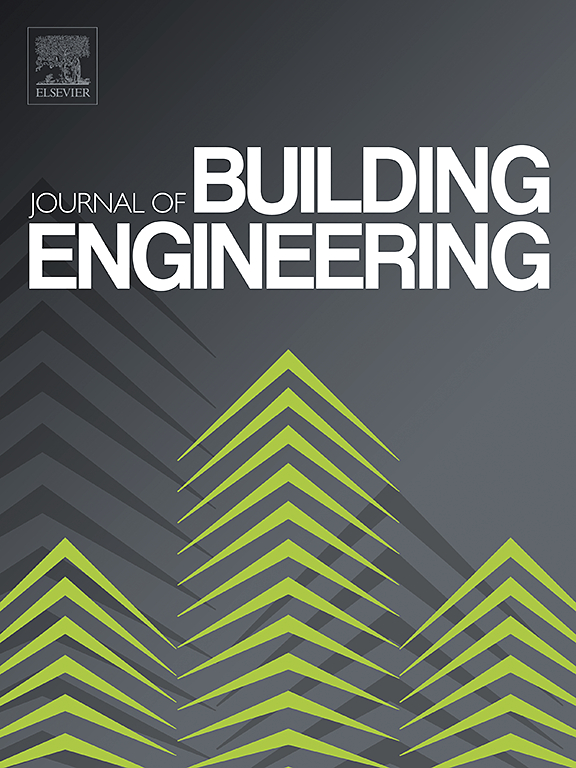聚苯胺与纳米粘土改性环氧涂料协同防腐蚀混凝土中低碳钢条
IF 7.4
2区 工程技术
Q1 CONSTRUCTION & BUILDING TECHNOLOGY
引用次数: 0
摘要
本研究探讨了四种不同硅烷处理的纳米粘土(蒙脱石- mmt,有机蒙脱石- ommt (Cloisite®15A和Cloisite®30B)和halloite - hnt)与聚苯胺(PANI)结合使用的纳米增强环氧涂料的功效。聚苯胺是一种很好的防腐蚀涂料颜料材料,它能捕获金属表面的电子,使其远离涂层。结果表明,纳米粘土增强环氧涂料的性能优于纯环氧涂料。这种改善是由于纳米粘土的阻隔性能和聚苯胺碎片的综合作用,聚苯胺碎片与涂层内的纳米粘土颗粒紧密结合。纯环氧涂料的腐蚀起始延迟时间为7-8天,而含有Cloisite®30B的聚苯胺涂层将其延长至70-75天。此外,纯环氧树脂样品的超声导波信号在40天内下降到零,而含有PANI和Cloisite®30B的样品在90天后仍保持了90%的信号强度。值得注意的是,Cloisite®30B和PANI的组合被证明是最有效的,嵌入的纳米粘土颗粒创造了扭曲的扩散路径,阻碍了离子的进入和腐蚀的传播。此外,Cloisite®30B的羟基支持纳米粘土和聚合物基质之间的键合,从而形成一个不渗透的网络。硅烷处理粘土的表征结果表明硅烷剂成功接枝到纳米粘土结构上,而不同涂层的FE-SEM图像显示了纳米填料在涂层基体中的分散。从本质上讲,我们的研究强调了先进的纳米改性环氧涂料在减轻腐蚀引起的结构退化方面的关键作用,从而增强了基础设施的弹性和寿命。本文章由计算机程序翻译,如有差异,请以英文原文为准。
Synergistic corrosion prevention of mild steel bars in concrete using PANI and nano-clay modified epoxy coatings
This study explores the efficacy of nano-reinforced epoxy coatings using four different silane-treated nano-clays (Montmorillonite-MMT, Organic Montmorillonite-OMMT (Cloisite®15A and Cloisite®30B) and Halloysite-HNT) in conjunction with polyaniline (PANI). PANI, being a good pigment material for anti-corrosion coatings, captures electrons from the metal surface, redirecting them away from the coating. The results show that nano-clay reinforced epoxy coatings perform better than pure epoxy coatings. This improvement is due to the nano-clay's barrier properties and the combined effect of polyaniline fragments, which align closely with the nano-clay particles within the coating. Pure epoxy coatings showed a corrosion initiation delay of 7–8 days, whereas PANI with Cloisite®30B extended this to 70–75 days. Moreover, ultrasonic guided wave signals for pure epoxy samples dropped to zero within 40 days, while those with PANI and Cloisite®30B retained 90 % of their signal strength after 90 days. Notably, the Cloisite®30B and PANI combination proved most effective, with intercalated nano-clay particles creating tortuous diffusion pathways that impede ion ingress and corrosion propagation. Additionally, the hydroxyl groups of Cloisite®30B endorse bonding between nano-clay and polymer matrix resulting in an impermeable network. Characterization results of silane-treated clays demonstrate successful grafting of the silane agent on the nano-clay structure, while FE-SEM images of different coatings display the dispersion of nano-fillers within the coating matrix. In essence, our research underscores the pivotal role of advanced nano-modified epoxy coatings in mitigating corrosion-induced structural degradation, thereby bolstering infrastructure resilience and longevity.
求助全文
通过发布文献求助,成功后即可免费获取论文全文。
去求助
来源期刊

Journal of building engineering
Engineering-Civil and Structural Engineering
CiteScore
10.00
自引率
12.50%
发文量
1901
审稿时长
35 days
期刊介绍:
The Journal of Building Engineering is an interdisciplinary journal that covers all aspects of science and technology concerned with the whole life cycle of the built environment; from the design phase through to construction, operation, performance, maintenance and its deterioration.
 求助内容:
求助内容: 应助结果提醒方式:
应助结果提醒方式:


